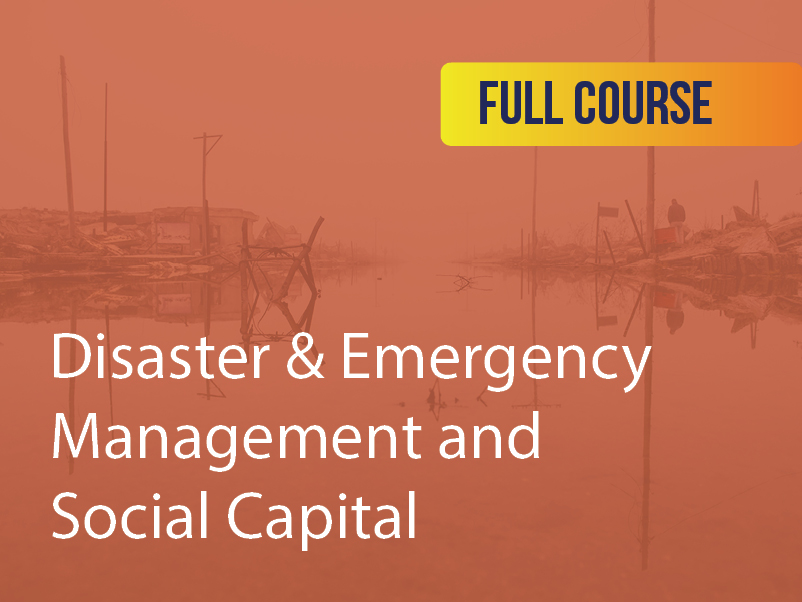
About Course
This course is designed to provide a foundational understanding of the role that social capital plays in enhancing disaster preparedness, response, and recovery. It is particularly relevant for emergency management professionals, community leaders, policymakers, and anyone interested in improving communities’ resilience to disasters.
The course is structured into several modules, each building on the previous one to provide a deep understanding of social capital and its application in disaster and emergency management.
Module One lays the foundation by explaining social capital, its importance, and how it functions both individually and collectively. It introduces the core components of social capital—connectedness and predispositions—and explains how these elements can be leveraged to create better outcomes in various contexts, including disaster and emergency management.
Module Two builds on this foundation by exploring the application of social capital, specifically within the field of disaster and emergency management. It highlights the growing recognition of social capital’s importance in this field, citing prominent scholars and the increasing research interest in the topic. This module emphasizes that understanding and utilizing social capital can significantly enhance community preparedness, improve organizational performance, and foster stronger relationships between emergency management groups and the communities they serve.
Module Three focuses on operationalizing the theories of social capital within emergency management. It addresses the challenges of crisis communication, the lack of institutional trust, and the barriers to engaging populations. This highly practical module guides learners through identifying networks within communities, mapping these networks, and developing strategies to engage with them effectively. It teaches how to leverage social capital to build trust, enhance communication, and improve the overall effectiveness of disaster management efforts.
Module Four continues this practical approach by guiding learners through the process of identifying key leadership within networks and mapping relationships. It provides a methodology for emergency managers to understand the structure of their communities, identify influential leaders, and create engagement strategies that are informed by social capital principles. This module also introduces the idea of creating an enabling environment where social capital can be nurtured and leveraged for better disaster management outcomes.
By taking this course, participants will gain a nuanced understanding of how social capital functions and how it can be applied to enhance the effectiveness of disaster and emergency management efforts. They will learn how to build and utilize networks of trust, improve communication strategies, and foster stronger, more resilient communities. The course is ideal for those who wish to move beyond traditional approaches to emergency management and incorporate social science insights to create more robust and effective strategies for dealing with disasters.
Course Content
Module One: Understanding social capital.
-
Introduction
02:19 -
Lesson 1: What is Social Capital?
07:10 -
Lesson 2: The Meaning of Social Capital
06:17 -
Lesson 3: Low and High, Positive and Negative
07:11 -
Lesson 4: What does social capital do?
06:24 -
Lesson 5: Social capital for different levels of society
07:59 -
Lesson 6: The Social Capital Framework and Predispositions
09:12 -
Lesson 7: The Social Capital Framework and Connectedness
09:02 -
Lesson 8: The core components of social capital
07:50 -
Lesson 9: A schema for the application of social capital
09:01
Module Two: Application of social capital to DEM.
Module Three: Operationalising social capital in DEM.
Module Four: Specific applications of social capital in DEM
Student Ratings & Reviews
Each module is thoughtfully structured: the first introduces core concepts; the second explores social capital’s relevance in disaster contexts; the third guides learners through network mapping, engagement, and communication strategies; and the fourth focuses on identifying local leaders and creating enabling environments for trust and cooperation.
What sets this course apart is its integration of theory with actionable tools—ideal for emergency professionals, community leaders, and policymakers. By the end, learners are equipped to build trust, improve engagement, and foster community resilience using social capital principles.
A must for anyone seeking a deeper, more community-centred approach to disaster and emergency management.


